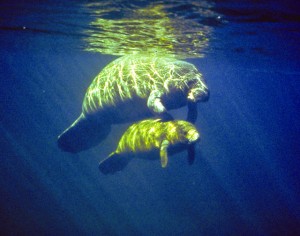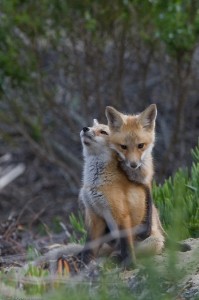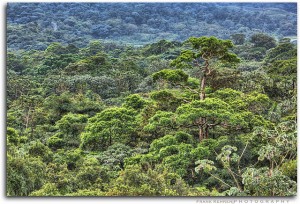WEDNESDAY, 9 NOVEMBER 2011
Browsing the Macaulay Library archive had resulted in a series of similar surprises: that white storks sounded like chainsaws ticking over, that half-tonne afrotherians sounded like guinea pigs, and that short-eared possums sounded like, well, nothing I’d ever heard before. The library – curated by the Cornell Lab of Ornithology in New York – is the world’s largest archive of wildlife recordings with over 170,000 tracks of birds alone.Until relatively recently, the ability to record in the field was hampered by the bulk and expense of the equipment used. Technicians were continually frustrated by the lack of repair facilities and difficulties arising from operating in less than clement condition. Hence the field has been driven by a very small number of pioneering collectors. The origins of the Macaulay Library lie with an ex-New York broker and a graduate student with an interest in electrical sound equipment.
In 1951, Professor Günter Tembrock founded the Tierstimmenarchiv in Berlin, which now houses over 110,000 recordings and, as such, holds the record for the largest European archive for animal sounds. Professor Tembrock admitted a flair for collecting when interviewed for Human Ontogenetics in 2008. It was this side of his personality that led to his work on the Tierstimmenarchiv.
As archives were mainly founded by a handful of individuals, collections were originally focused around a few animals on which specific research was taking place. The Tierstimmenarchiv, for example, still has a huge collection of red fox recordings due to the interest Tembrock took in documenting their behaviour during the ‘50s. Similarly, Robert Stein, a graduate student of the Macaulay library, was working on flycatchers during the same period and amassed a huge collection of calls for the library. Stein’s work demonstrated, for the first time, that the Traill’s Flycatcher was actually two genetically distinct species, which we now know display previously unidentified subtle morphological differences. The evidence was always there, we just weren’t listening hard enough.
These projects were catalysts for the origin of the archives. Today, archive curators welcome recordings taken by professional sound technicians alongside files uploaded from iPhones. The Macaulay Library now features a ’10 most wanted’ list. But are the archives still scientifically relevant or just an audibly pleasant way to avoid real research on a Thursday afternoon?
Jose Manuel Ochoa-Quintero, of the Department of Zoology’s Conservation Science Group, doesn’t think so. His research focuses on the patterns of deforestation in the Amazon and so it is vital for him to know what species are present and where. This is not easy to do when relying solely on data from sightings. This research is using sound to more accurately investigate the distribution of different species. “During the transects of 1 km, I stop… and play the vocalizations of three or four different bird species… particularly wrens and antbirds that are highly territorial. Then I will wait for 4-5 seconds to get the reply”. This ‘playback’ technique is widely used in conservation, animal behaviour studies and biodiversity surveying and has even been used to lure displaced individuals of endangered species, such as the Bermuda petrel, back to nesting burrows.
Sound archives, such as that housed in the British Library which Jose uses in the field, act as sources of otherwise elusive animal calls which are also used to hone skills required to identify bird species in the field. “In the tropics, the density of many species is too low and you don’t want to lose any possibility to register them”, says Jose.
But an appreciation of the recordings and of sound itself does not need to be solely for research purposes. Tim Cockerill, also of the Department of Zoology, noticed how his awareness of the sonic landscape of Malaysian Borneo was sharpened when recording a series of podcasts for the funding body NERC. Tim stated that “you suddenly became aware of the sounds around you in a more focused way. In the rainforest, a huge part of what you notice is the diversity of sounds made by animals – frogs, insects, birds, mammals, even lizards. It makes you realise how much we filter out when we’re surrounded by noise.”
“Sound today is a wonderful and burgeoning art form which can be used to great effect,” explains Julian Hector, head of Natural History programming for radio at BBC Bristol. “‘Sound pictures’ – both natural sound and the words that accompany the description of a place, event, story – can be powerful. There are TV producers now who want to approach their films with equal measure of sound and vision”.
Julian worked for the British Antarctic Survey, spending time in South Georgia between 1981 and 1986. It was there, researching albatross breeding cycles, that he began recording occasional field reports. His reporting was “derived from the sheer joy of being there and the over powering sense of wonder [he] felt for the albatrosses, seals, penguins and the environment”.
It is perhaps telling that Julian’s beginnings in radio were directly inspired by awe of the location and an urge to share natural phenomenon rather than from the science he was conducting. This innate enjoyment of natural sound twinned with the technology now available to recorders might go someway to explain how important sound is beginning to become within natural history broadcasting.
Sound carries information that can inform us on the presence of animals in the densest environments, can reveal cryptic species unidentified for hundreds of years and can make us more efficient researchers in the field. But it also has a more immediate use in its ability to captivate audiences. This experience was described by David Attenborough whilst in conversation with recorder (and founder of the music venue Cabaret Voltaire) Chris Watson, in 2009: “The first time I went to South America back in the ‘50s, no one had ever told me that monkeys could howl like that. The first time that I heard it we were sleeping in the hammocks... and suddenly – this amazing noise!”
Günter Tembrock, who died in January, wasn’t a ‘sound recorder’ by profession. Indeed, his academic interests were legion; ranging from the theory of consciousness to development. The legacy of his first tawny owl recording in 1951 was as much a part of his interest in biocommunication as it was the pursuit of a hobby. In the same way as sound archives, today, are not just a collection of sounds with possible research applications. They still have roles to play in science, but perhaps as importantly, they are gold mines for entertainers, artists and educators. But now, please, point your browser towards the Gulf of Mexico, put your headphones on and tell me manatees shouldn’t sound like that.
Written by Nick Crumpton



